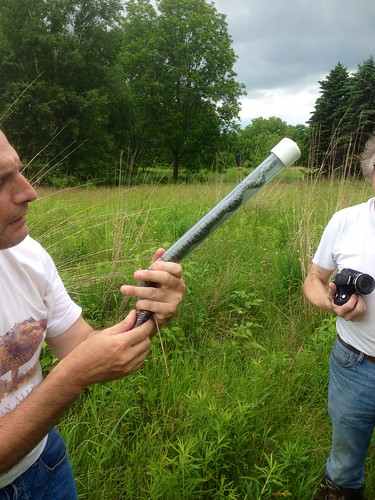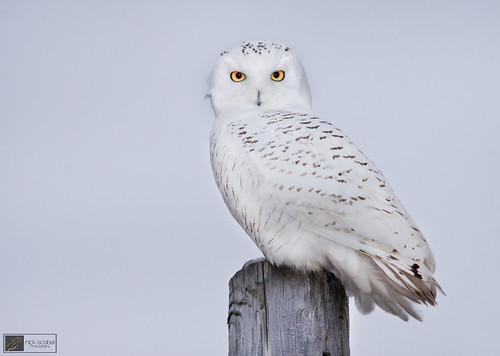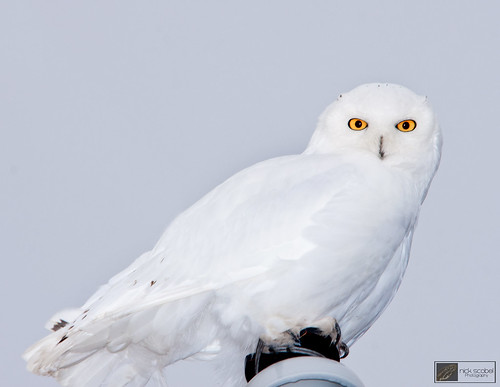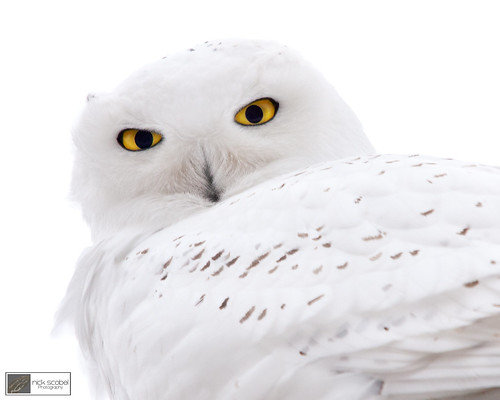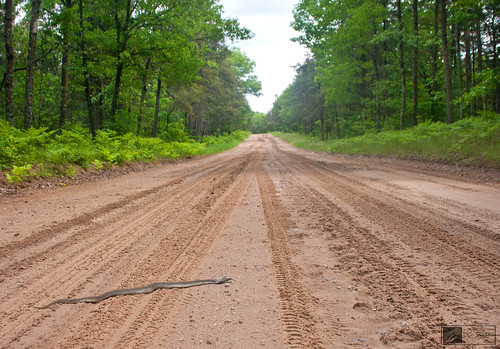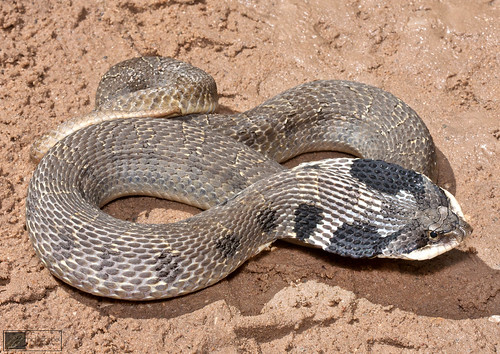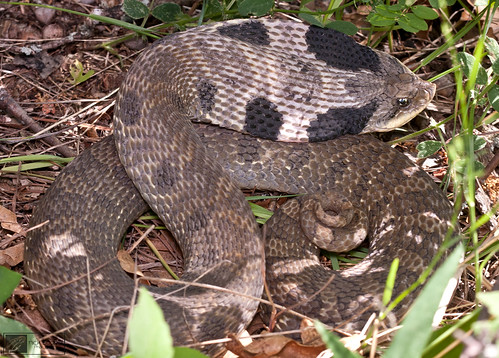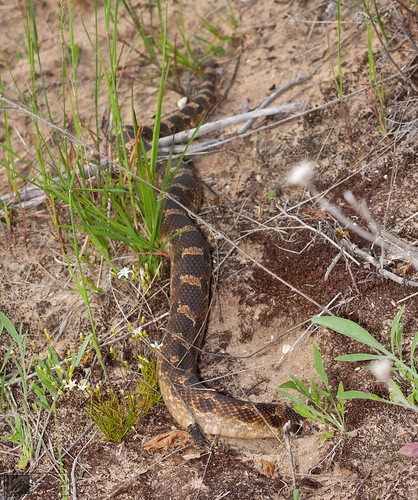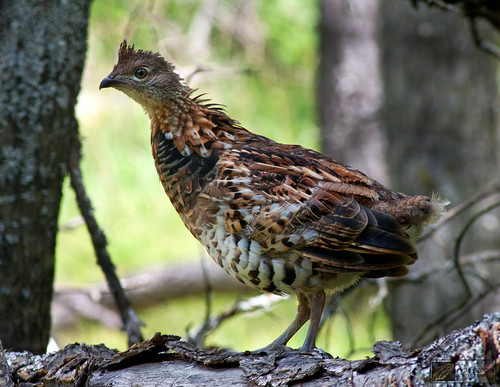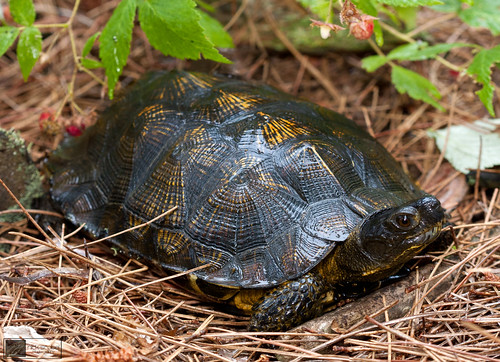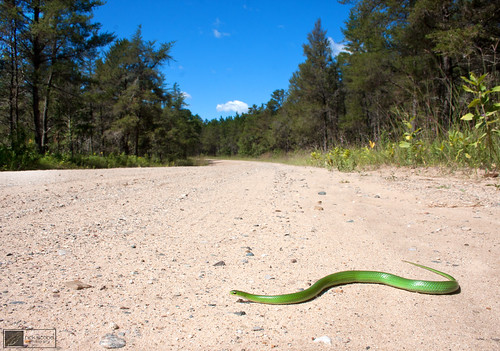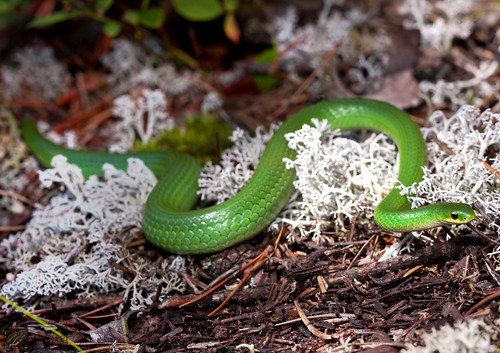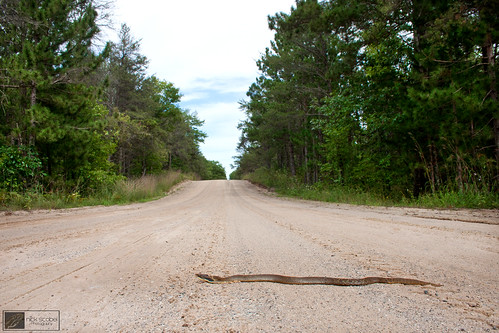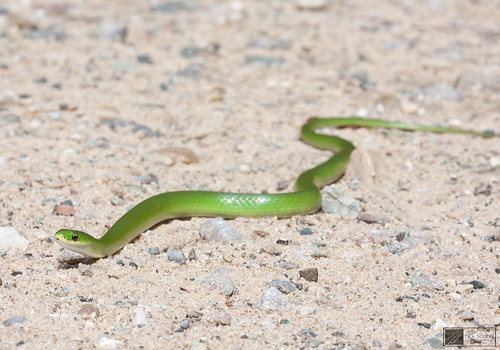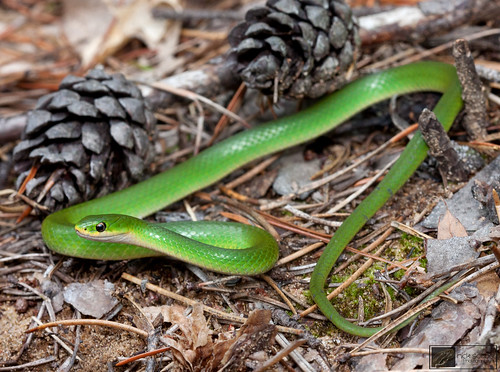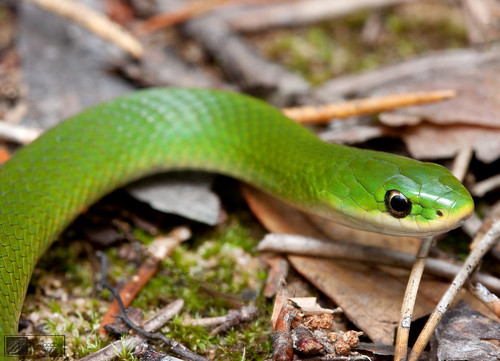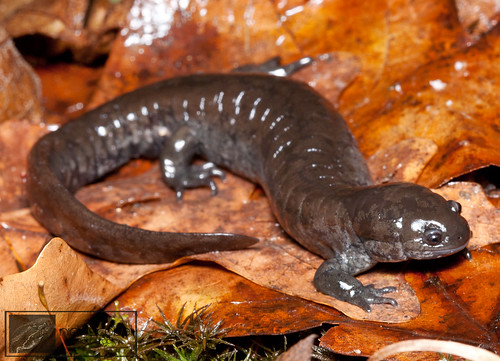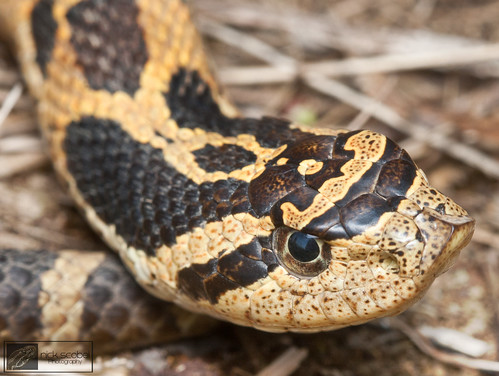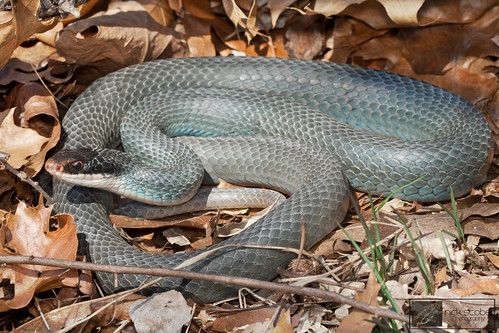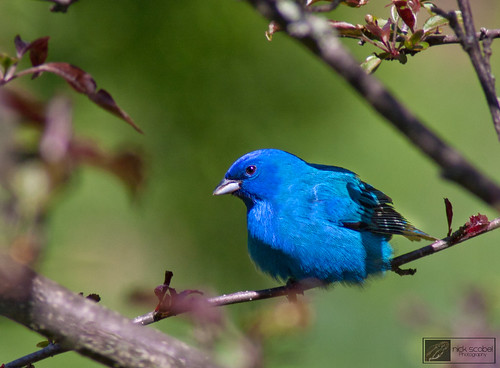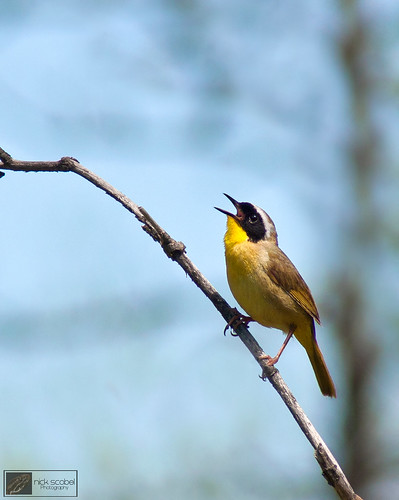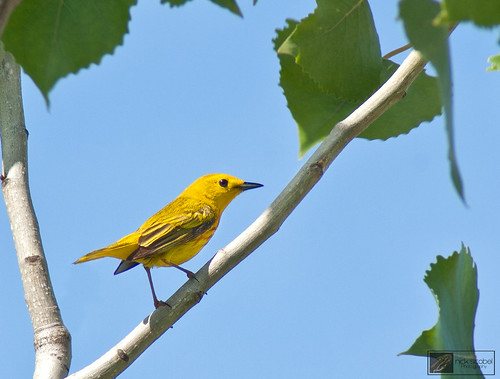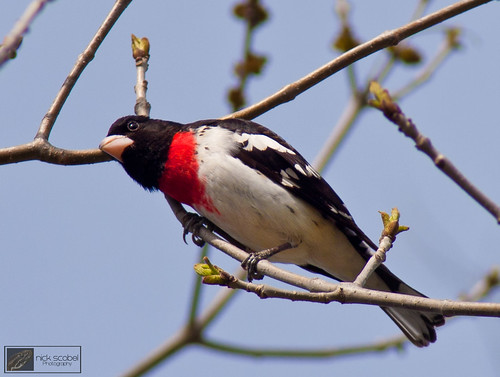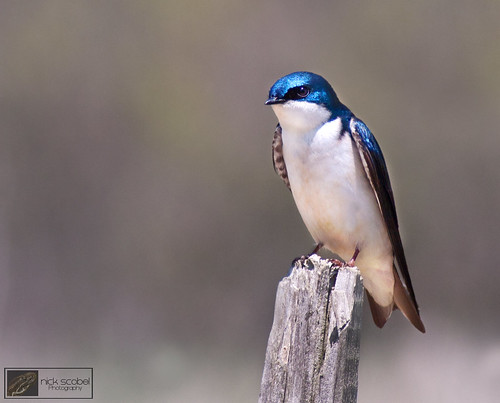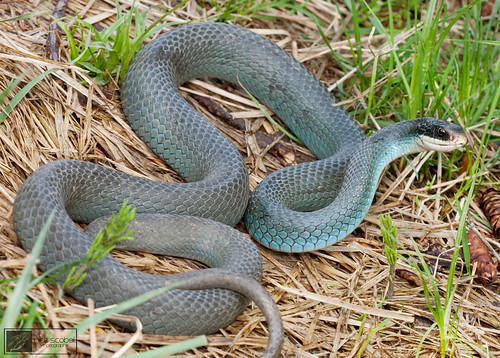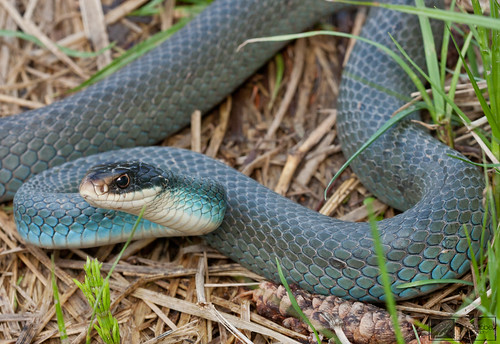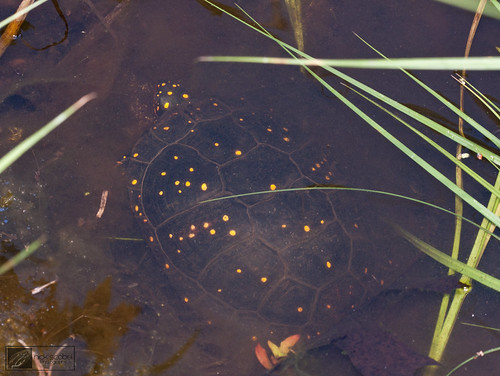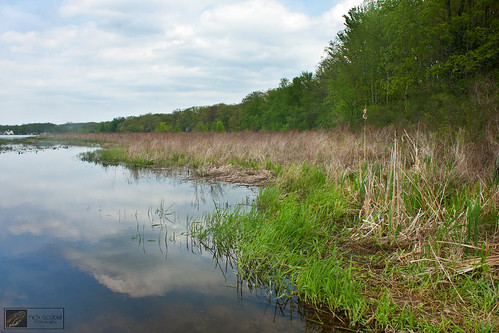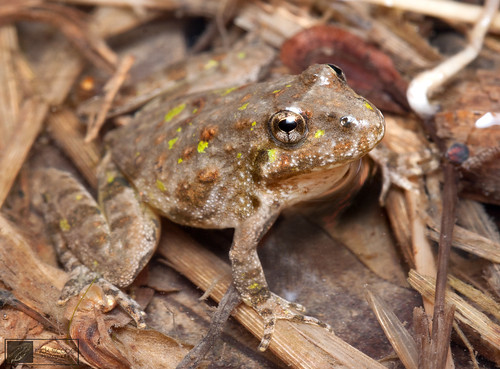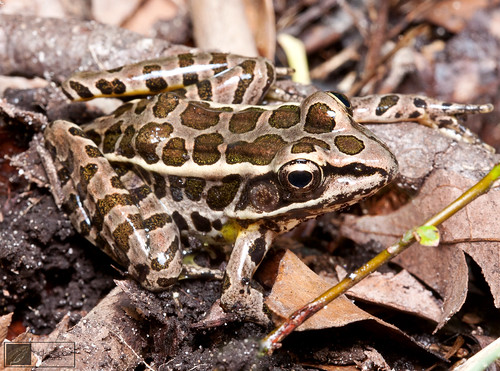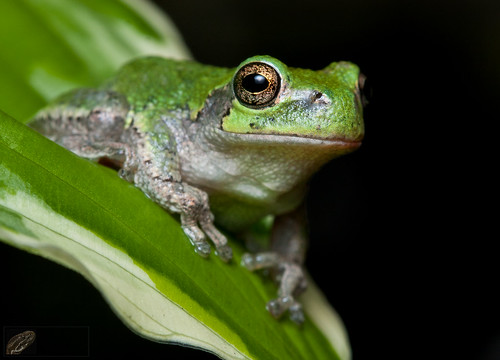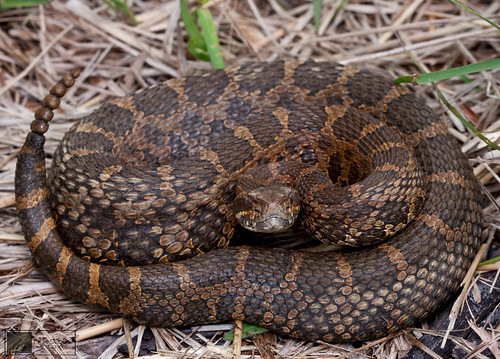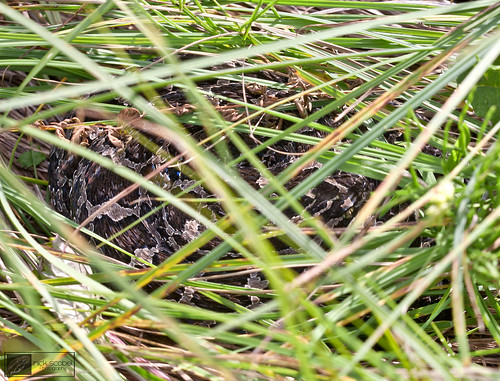 |
| Adult male EMR, particularly dark for this locale. |
A handsome snake, though exceedingly dark for this location. The snake was measured, weighed, and given a unique identification number as part of an ongoing mark-recapture study on site. After a brief lunch, we set out to another area of the property to walk some upland fields which serve as summer habitat for massasaugas. One field in particular has yielded good numbers of snakes in the past for me over the summer months. And with an overcast sky and temps in the low 70s, I was optimistic about our chances. We split about 10 feet apart, and walked as a group, combing the area for a dark shape coiled amongst the tall grass. It wasn't long before I noticed a freshly shed female try to soak up whatever warmth she could on this overcast day.
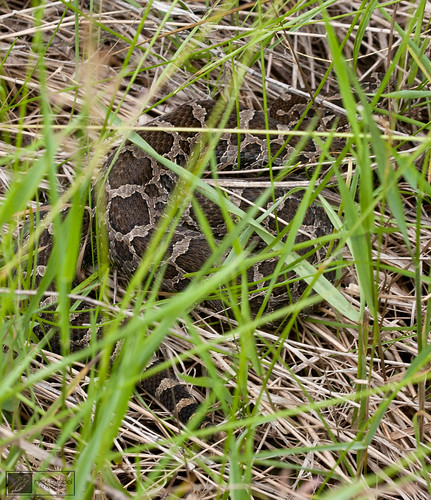 |
| Gravid female EMR, trying to remain hidden in the grass. |
This was a new snake, a young gravid female. Like other captured snakes, data was taken and she was given a unique identification number. She was then released exactly where she was found. The mark-recapture study at this location is part of a much larger habitat restoration project. Population estimates and trends are vital information as the habitat management at this site moves forward.
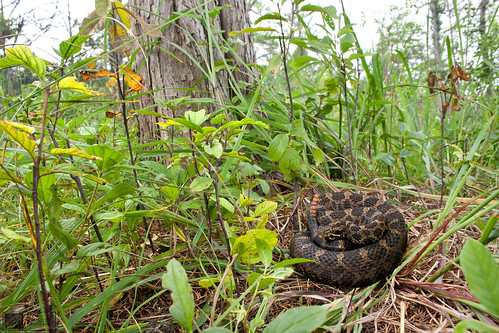 |
| A large adult Eastern Massasauga Rattlesnake (Sistrurus catenatus) at home in a prairie fen. |
Though I can't always help out with surveys, I keep my own personal records on massasauga observations, trends, and health of snakes at various locations across southeast Michigan. Changes in numbers of observations or succession of habitats isn't necessarily concrete scientific data, but it is observational data which can help. I'll be sharing some more posts over the course of the winter on massasaugas, particularly from the fall months at a location or two that are pretty incredible, but show signs of trouble from the ever encroaching snake fungal disease (SFD). Until then, keep warm!


